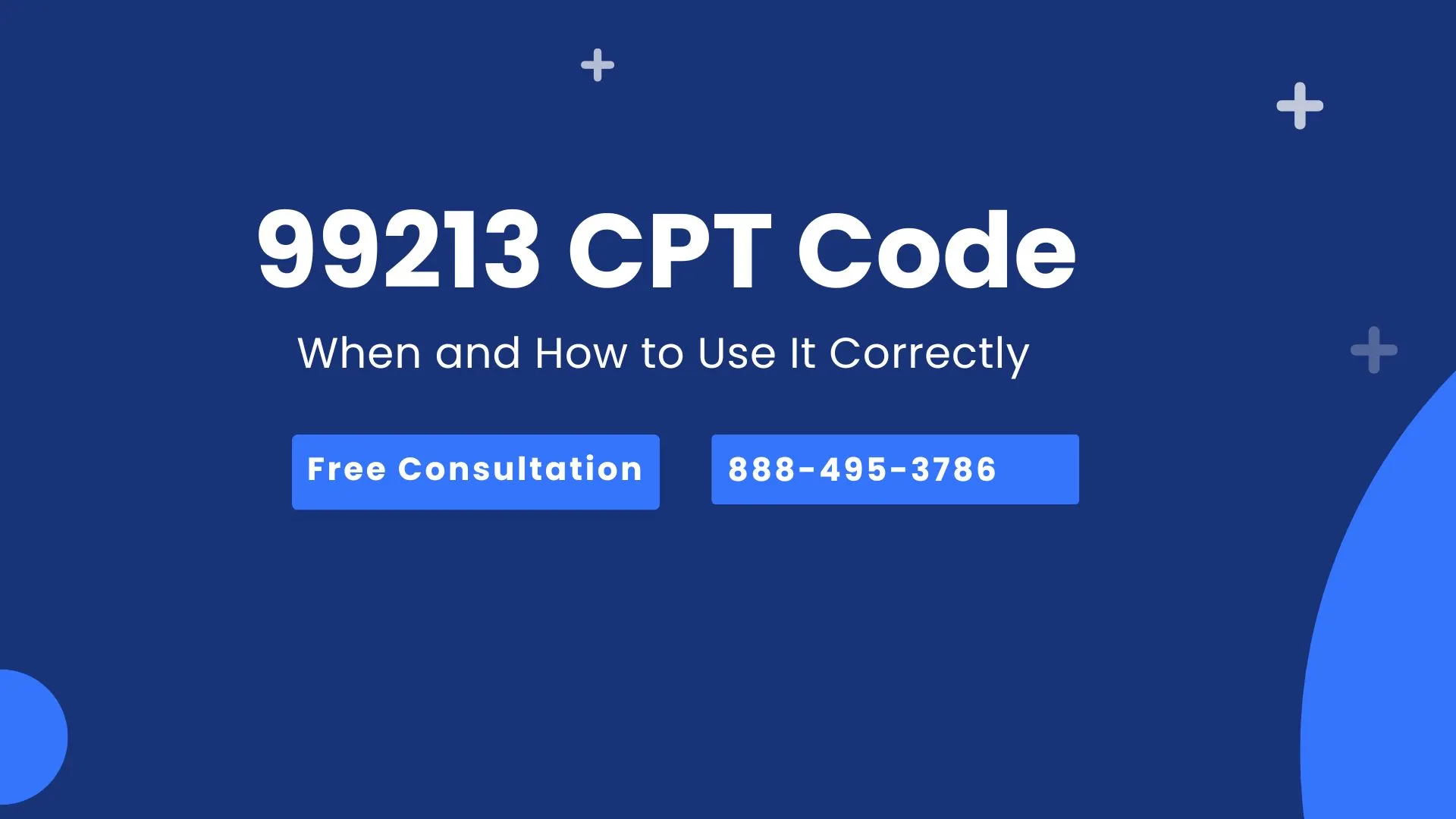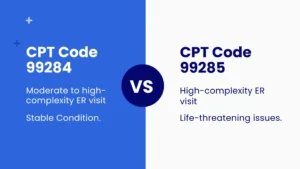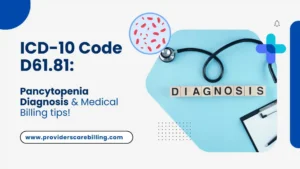Healthcare providers face many regulatory challenges and reimbursement issues. Here, accurate medical billing becomes a necessity. For this purpose, different codes are used. One of the most common codes in outpatient dealings is CPT code 99213. This code is used for a regular patient’s moderately complex office visit.
In this blog post, we aim to make sure CPT 99213 is used correctly, so the service matches the notes in the records and the right payment is received.
Let’s First Know What CPT Code 99213 Is.
Current Procedural Terminology (CPT code) refers to the coding system which is used in the medical field. And the main use of this code is to capture services, procedures, and diagnostics that a healthcare provider will perform. These codes are under the American Medical Association (AMA).
And they help enhance the communication gap between providers, patients, and payers. Medical code 99213 sits under Evaluation and Management (E/M) Office or other outpatient visit for established patients.
Key Characteristics
- Type of Patient: Established patient, which means a patient who has availed professional attention from a particular provider or another provider of the same speciality within three years from a group practice.
- Service Place: Office or any outpatient area.
- Level of Difficulty: Moderate to simple difficulty.
- 99213 Time Duration: About 15 minutes in-person with the patient.
Step-by-Step Guide to Billing CPT 99213
Step 1: Check Patient Eligibility
The first case in this scenario is checking whether the patient is established. As per the CPT 99213 definition, an established patient is someone who has had a professional service done by a physician or another physician of the same speciality within a group practice of the same speciality in the last three years.
A patient meeting this requirement is very important in place before assigning the CPT established patient code, which is only designated for office or other outpatient visits.
Step 2: Evaluate the Visit Components
Now, analyze the components of the visit to assess if the 99213 medical billing code is the correct code to capture. This code, in particular, is for visits of moderate complexity that last around 15 minutes because it is an accurate time for 99213.
In this case, the visit should fulfil two out of the three criteria: an expanded problem-focused history, an expanded problem-focused examination, and a low level of decision making.
In the case that less focus on these components is preferred, the physician must meet the requirement that at least 15 minutes is spent face-to-face with the patient and the discussion is greater than 50% focused on counselling or care coordination.
Step 3: Document Thoroughly
The next step for perfect medical coding 99213 is to document clearly and completely. Providers have to document a clear chief complaint, a succinct history of present illness, and a relevant review of systems.
For the examination part, only a relevant particular area exam needs to be documented, and it must be fully explained in the notes. Medical decision-making has to be of low complexity.
Documentation should always justify the number and types of clinical issues, the data examined, and the risk that came with the patient’s condition or treatment plan. If documentation was created based on CPT 99213 time, document the total time spent in the office while noting the duration spent on counselling and care coordination.
Step 4: Assign the Appropriate ICD-10 Codes
Attach the necessary ICD-10 diagnosis codes after justifying the medical necessity of the visit in documentation. The provided diagnoses must align with the encounters and available services. Using the wrong diagnosis code can lead to claim rejections or lower payments. So, it’s important to choose the right code based on the patient’s condition and how complex the visit was
Step 5: Apply Modifiers if Necessary
Sometimes, extra codes called modifiers act as a bonus for the service code 99213 to explain the use of 99213 better. For example, Modifier -25 is often used when the same doctor does a separate check-up along with another procedure on the same day.
Modifier -24 applies when a check-up is done during the healing time after surgery, but it has no relation to the surgery.
These modifiers help the payers in knowing the clinical situation and avoiding inappropriate bundling or denial of services. However, such modifiers should only be added when the documentation substantiates them.
Step 6: Submit the Claim
After finishing coding, the 99213 requirement is the submission of claims. It is done either through a paper form using a CMS-1500 or electronically through billing software or a clearinghouse.
Perfection is paramount; ensure every single field is accurate alongside the provider and patient data, CPT and ICD-10 codes, any modifiers, and the date and place of service. Be mindful of the payer’s deadlines in these scenarios. Submitting claims without delays helps in avoiding denial based on timing.
Step 7: Monitor Claim Status and Address Denials
The last step in procedure 99213 is keeping an eye on the submitted claim while actively being ready to follow up on it. It’s important to deal with or track claims consistently and deal with any claim denials immediately. While following up, retaining an explanation of benefits document (EOB), look for reasons that include errors that most likely led to the denial.
Errors that lead to rejection of claims are sometimes as easy as codes not aligning, the office failing to provide adequate details, or even a lack of information. If this occurs, either appeal the decision or correct the error and resubmit the claim. Make sure that the documentation proves the service you intend to rebill.
Common Pitfalls to Avoid
After knowing the CPT code 99213 definition and coding proc code 99213 properly, you must know some pitfalls that should be avoided.
- Upcoding – Capturing a higher level of service than provided.
- Avoidable Issues – Reasons and methods of preventing problems included above.
- Undercoding – Recording not capturing provides a lesser level of service, which results in a loss of income.
- Document insufficiencies used means done – Claim lacks details to guarantee support services billed. Unjustified application of explanation, deficient proof to show just cause, and using altercations.
Regular audits alongside training can be utilized to address the listed problems and ensure there is compliance with the notice provided.
Learn more about: J Codes in Medical Billing and Why They Matter
Final Thoughts!
As we have seen, billing correctly using CPT code 99213 is a multifaceted process requiring an understanding of all the above steps. These steps will help the healthcare provider in minimizing denials, avoiding non-compliance, and expediting receivables for delivering care when accompanied by accurate medical records. In addition, keeping informed with ongoing coding changes alongside payer policies contributes to successful billing.
Let us simplify your coding – contact Providers Care Billing LLC today.
Follow us for more updates!




